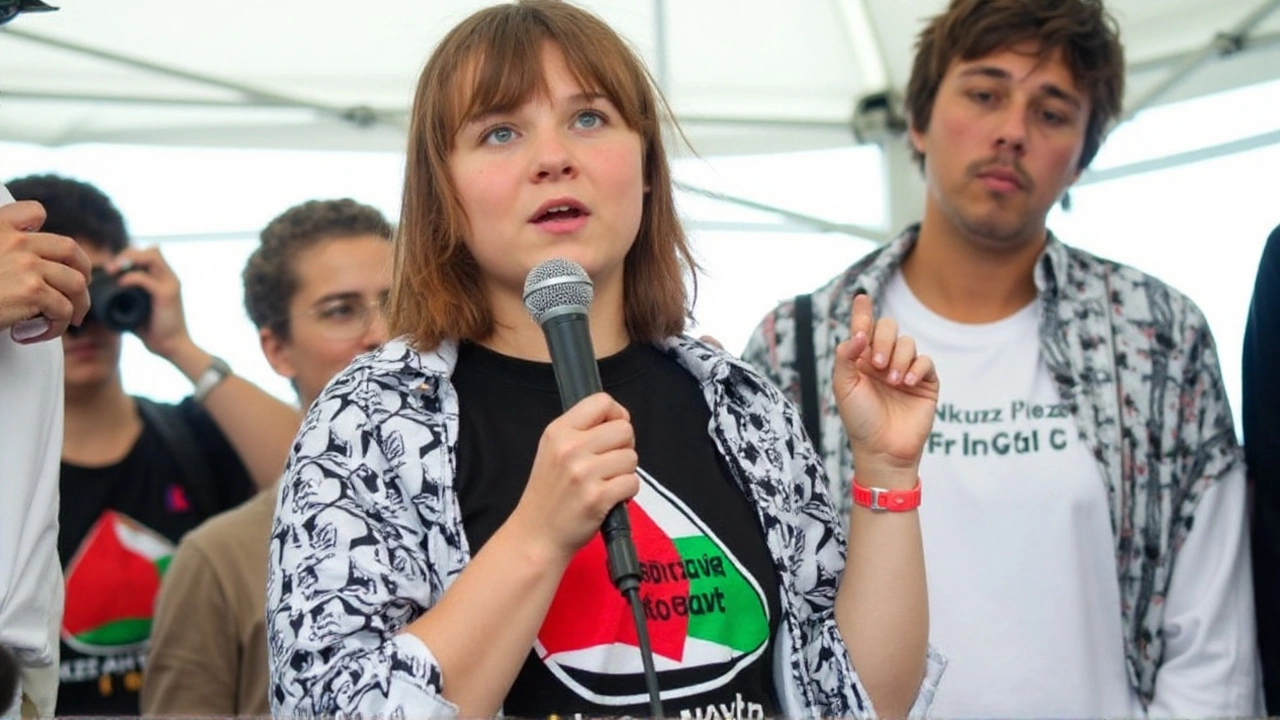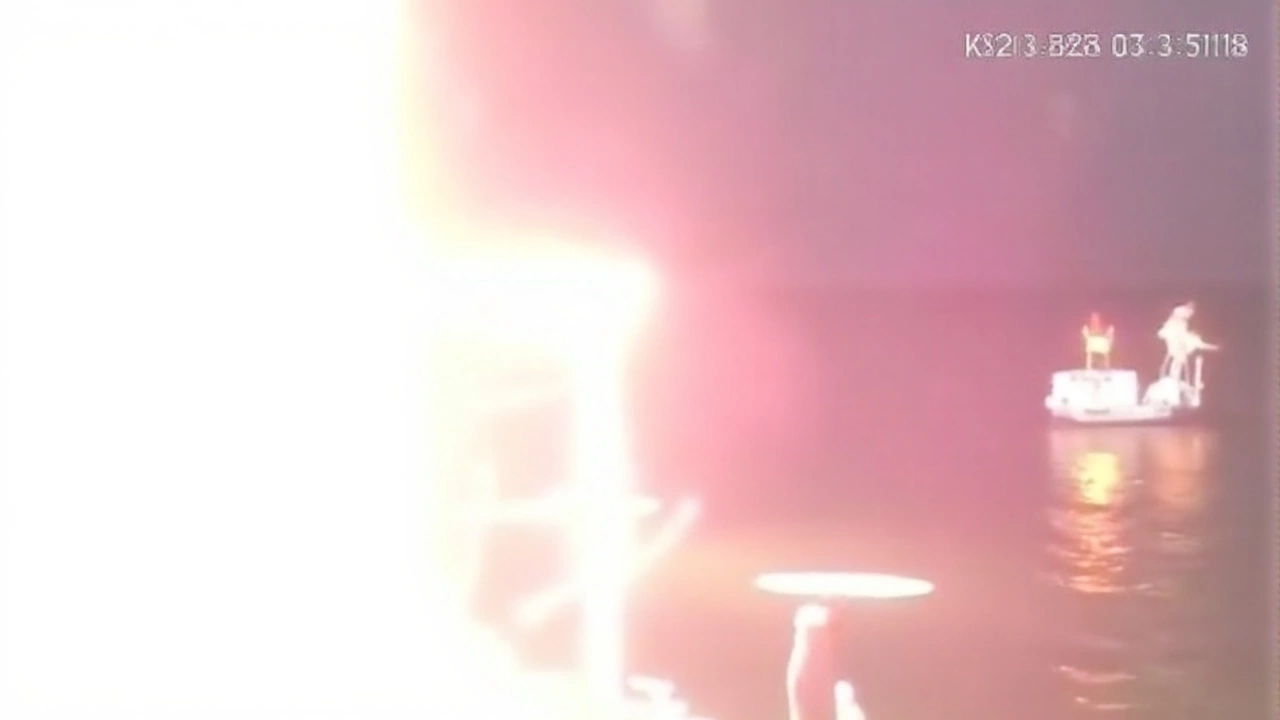What happened at the Tunisian port
A flash in the night, then flames on a docked aid boat. That’s what video posted by the Global Sumud Flotilla appears to show from a Tunisian port, where the group says a second suspected drone strike hit one of its vessels. The team behind the mission—an effort to challenge Israel’s naval blockade and carry relief supplies to Gaza—said all passengers and crew were safe, and that the fire was contained.
The convoy, described by organizers as several civilian boats, includes climate activist Greta Thunberg among its passengers, a detail that has pushed the story into a global spotlight. The group says the incidents won’t deter their plans. Tunisian officials, though, have pushed back on the drone narrative. Earlier this week, they denied that the first blaze was caused by a drone and said investigators are still working to determine what sparked both events.
The footage released by organizers shows a luminous object arcing in and a burst of fire on deck. It’s unclear when exactly the clip was filmed or what the object was. Organizers said it was a drone; authorities have not confirmed that. Independent verification of the video’s time, location, and cause is still pending. No one has claimed responsibility.
For the flotilla, this marks the second disruptive incident in quick succession. For Tunisia, it’s a sensitive security headache at a busy Mediterranean port. Authorities there say they are assessing damage, reviewing camera footage, and interviewing crew. Port operations continued, but with extra checks, according to people familiar with the procedures.
The mission is not a secret. The Gaza aid flotilla has openly framed its voyage as a challenge to the naval restrictions around the Gaza Strip while delivering food, medicine, and other essentials. Organizers argue that civilian boats carrying aid should be allowed safe passage. They’ve also said they coordinated port calls with local authorities. Officials in Tunisia have not detailed any security threats beyond the two incidents under review.

Why this flotilla matters—and the questions it raises
The Gaza Strip has faced years of movement and access limits by sea, enforced by Israel with the stated aim of preventing weapons smuggling to Hamas and other armed groups. Israel’s blockade has been in place since 2007, after Hamas took control of the enclave. Human rights organizations say those restrictions have deepened a humanitarian emergency, especially during the current war, with shortages of food, fuel, and medical supplies repeatedly documented by aid agencies on the ground.
Flotillas are not new. A handful of attempts since 2008 have tried to sail to Gaza, some turned back, some intercepted, and at times met with force. The most infamous was in 2010, when a deadly raid on a Turkish-led convoy drew international outrage and years of legal disputes. Because of that history, any new voyage draws scrutiny from governments, militaries, and advocacy groups alike.
This time, the presence of Greta Thunberg adds a twist. Thunberg’s profile has long extended beyond climate rallies, and her involvement has brought a wave of attention from supporters and critics. For the flotilla, that visibility can be a shield and a magnet: it helps pressure authorities to ensure safety, but it also increases the risks and the stakes of every move.
There are several open questions that matter now:
- What exactly hit the boat, and how was the fire triggered?
- Who, if anyone, directed the object toward the vessel?
- What security steps did the port have in place, and were they sufficient?
- Will the flotilla proceed to sea, and if so, when and under what escort or insurance terms?
- If the boats sail, how will regional navies respond as they approach contested waters?
On the technical side, investigators will look for fragments, scorch patterns, and chemical traces that can separate an electrical failure from an external strike. Video analysts may study frame-by-frame imagery for trajectory and heat signature, while checking weather, flight restrictions, and potential drone activity logs near the port. The absence of injuries suggests the impact was limited and localized, or that the crew responded quickly with onboard firefighting gear.
For Tunisia, the case is more than a forensics puzzle. Allowing the flotilla to embark touches on diplomacy, security, and domestic politics. The government must balance support for humanitarian efforts with the responsibility to keep ports safe and avoid being drawn into a regional confrontation. Investigators’ findings will shape that calculus.
For organizers, the stakes are humanitarian and symbolic. They argue that even attempting the voyage spotlights the difficulties aid groups face getting supplies into Gaza. Overland routes have been slow and unpredictable. Air drops have reached some communities but can’t replace a steady pipeline of trucks and medical shipments. Sea routes—whether via military-built piers, commercial shipments, or civilian boats—have become part of a patchwork that still falls short of demand.
International law will loom over whatever happens next. In open waters, naval forces can intercept ships they suspect of smuggling if they meet specific legal tests. Near ports, host countries set the rules. If the flotilla sails, any encounter at sea will be parsed through that lens—where the ships are stopped, what warnings are given, and how passengers respond.
Security experts say port incidents involving drones remain uncommon but no longer surprising. The spread of small, inexpensive UAVs has created vulnerabilities for ships, refineries, and airports. Even without confirmation here, port authorities worldwide will watch this case closely for clues about emerging tactics.
For now, the facts are narrow: two incidents, one confirmed fire, no injuries, and an ongoing investigation with competing narratives. The flotilla’s organizers say they’re assessing damage and timelines. Tunisian officials say they’ll release findings when they have them. The boats remain in port, the crew on alert, and the spotlight fixed on a mission that blends aid delivery with political defiance.



